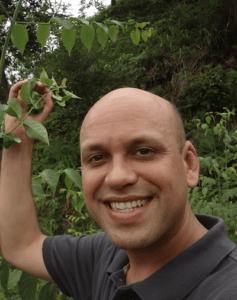Where herbs come from, how they are cultivated, how different plants have been used over the centuries; there is a lot we take for granted. Or simply trust our suppliers to have worked out the details of identification and quality. The medicinals we use regardless of whether they are granulated, tableted or raw have a natural history. This includes not just the process of growth and harvest, but also various kinds of processing as well.
In today’s conversation we look at the identification, cultivation and processing of the plants we use everyday in our clinical work.
- What Eric has been up to lately
- Issues around herb identification
- Manufacturing of granules in different regions
- The Taiwanese way of prescribing granules
- The effect of alkalinity
- The origin of 5 to 1 ratio for granulated herbs
- What to consider in prescribing the right amount of herbs
- What's on the horizon
 Eric Brand, PhD, L.Ac
Eric Brand, PhD, L.Ac
Simply put, I am an herb nerd with a passion for materia medica. I feel lucky to have had the chance to work with fantastic teachers at every stage along my journey, which seems to have gradually evolved from a focus on medicine to a focus on pharmacy. I started studying Chinese when I was 19, so when I began studying Chinese medicine at the Pacific College of Oriental Medicine, I forged a relationship with the boss of a traditional Chinese herb shop in San Diego, where I spent three years filling formulas and soaking everything up like a sponge. After I graduated in 2003, I moved to Taiwan and had the great fortune to be taken in by Nigel Wiseman and Feng Ye for many years. Nigel's tutelage in Chinese language, translation and terminology turned out to be life-changing, and my big homework assignment from Nigel resulted in our publication of the text Concise Chinese Materia Medica in 2008.
Links and Resources
Visit Eric's website Legendary Herbs for high quality granulated herbs
There is also lots of good stuff on the Legendary Herbs Facebook page
Eric is a prolific writer, here are a few articles for your inner herb geek:
Preserving the Natural and Cultural Resources of Chinese Medicine
Changes in Herbal Medicines from Ancient Times to the Present
Authenticity in Chinese Herbalism
Herb Identification
Historical Changes in Chinese Medicinal Materials
Clinical Importance of Pao Zhi
Join the discussion!
Leave a comment on Qiological's Facebook page.
